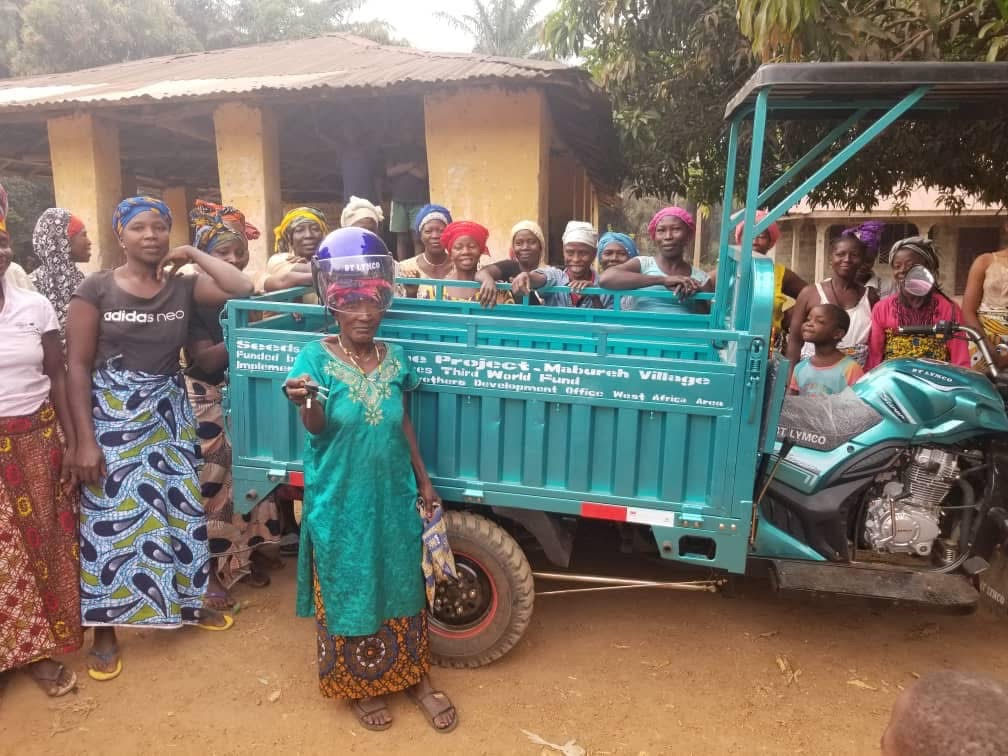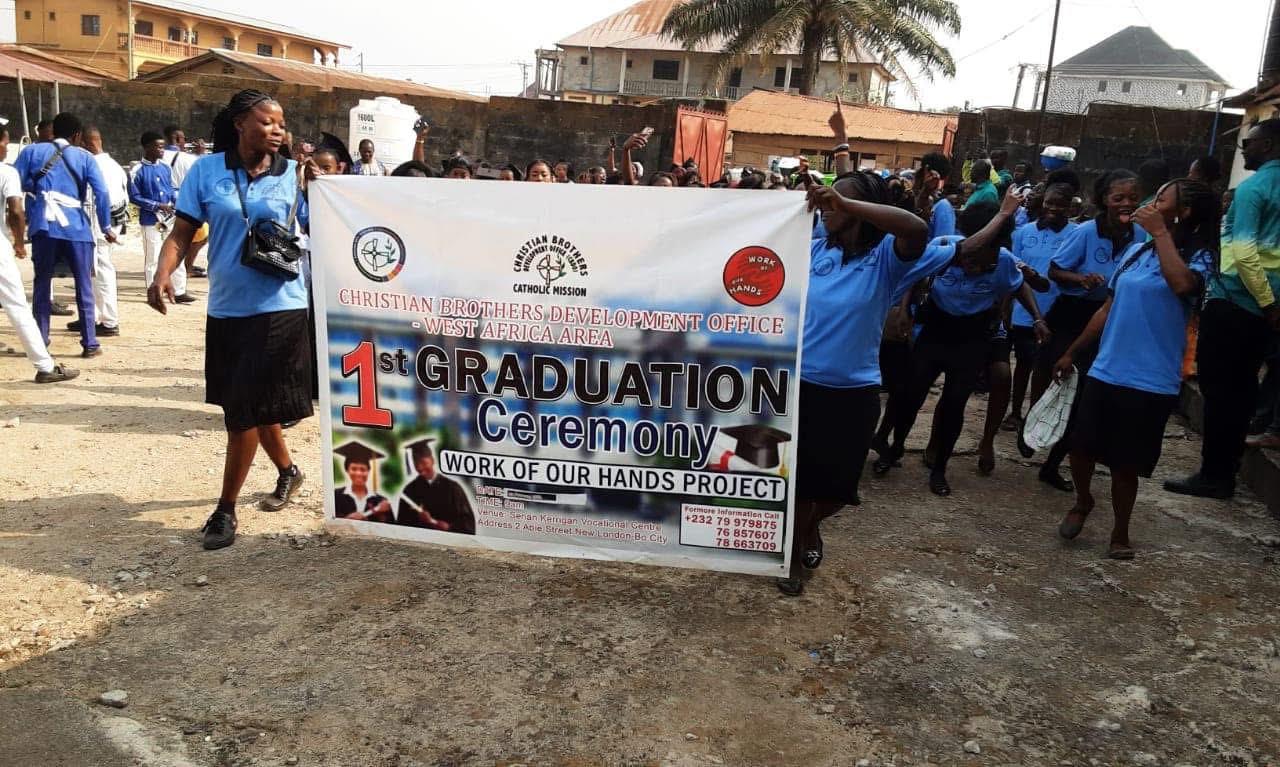1817 Early Contacts with the De la Salle Brothers in France
The Brothers of the Christian Schools, or De la Salle Brothers, had been founded in Rouen, France in 1680. Their first Training School was opened in Rheims 1685. In 1724 the Congregation was approved by a Papal Bull of Pope Benedict XIII.
As is explained in the earliest contacts with them, Edmund had heard of their Institute and believed that his Brothers could learn a lot from them.
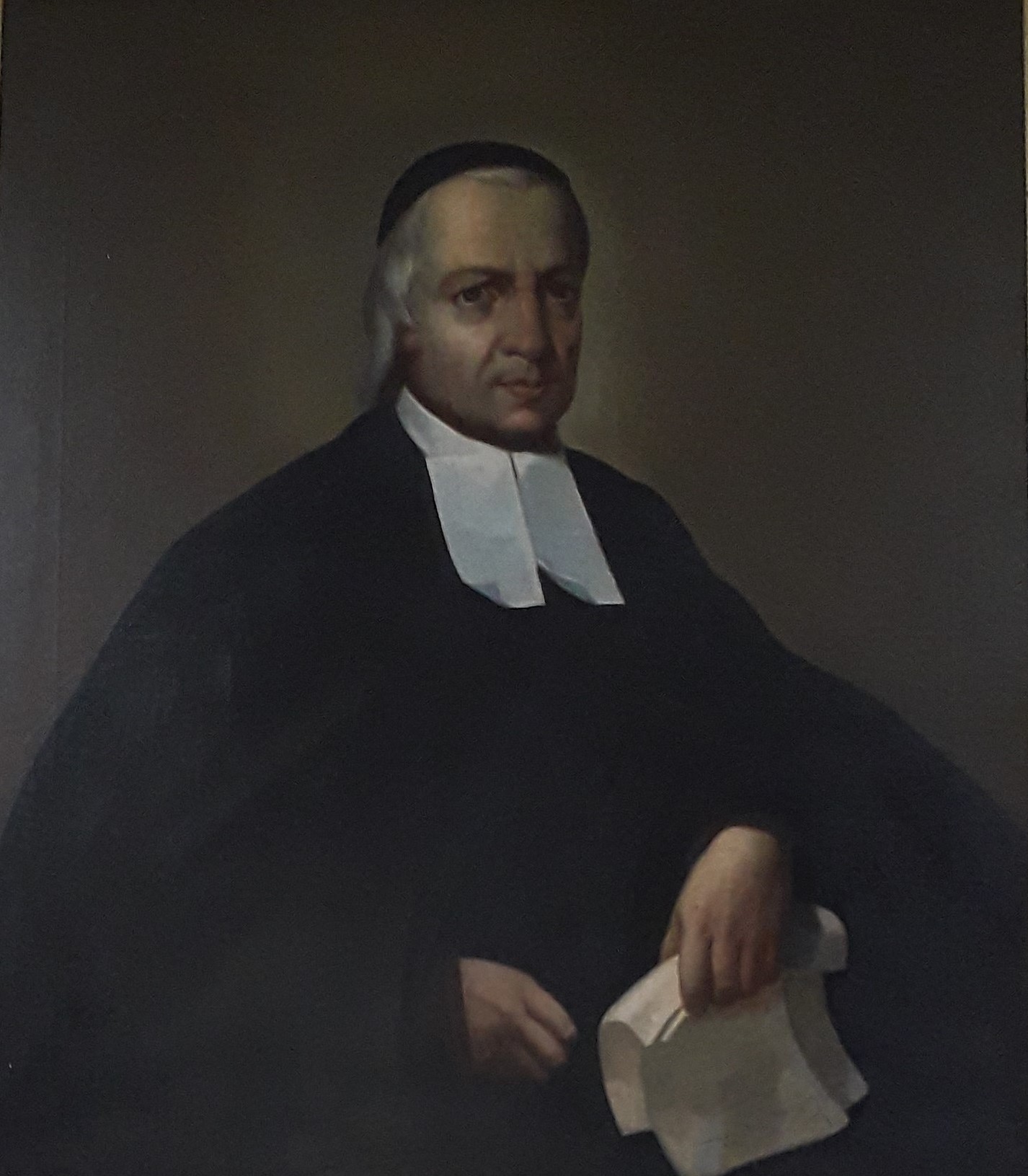 Brother Austin Dunphy, Second Assistant to Edmund Rice, writing to Frere Guillaume (right), the Superior General of the De La Salle Congregation, Paris:
Brother Austin Dunphy, Second Assistant to Edmund Rice, writing to Frere Guillaume (right), the Superior General of the De La Salle Congregation, Paris:
Waterford.
May 8th, 1826.
Very Venerable Sir ,
You who have been chosen, I may say, by Almighty God, to preside over and govern an Institute, the object of which is to give children a religious and moral Education gratuitously, will feel pleased on hearing that in this country a Religious Society has been established for the gratuitous Education of poor boys.
It will, I am sure, be a further satisfaction to you to learn that this Society has adopted your Brief and Common Rules, as far as they could be observed in this country and that our late Holy Father, Pius VII approved of and confirmed the Institute by a “Brief” bearing date 5th day of Sept. 1820. In the year 1817 there were only 6 houses of the Institute in Ireland. The Bishop of the Diocese in which the Brothers lived, was their Superior. Having no Superior General of its own, the Society was divided into separate small bodies, and hence its progress had been slow from its foundation in this City in the year 1804 by Mr. Ignatius Rice , who is the Superior General at present, to the period above mentioned.
In the early part of 1817 the Most Rev. Dr. Murray present Archbishop of Dublin was on his way from Rome, where he had been on business connected with the Irish Church. His Grace stopped in Paris for some days. Here he became acquainted with your Institute. He saw your Brief and Rules and he brought a copy of them to Ireland. He submitted them to us. We were immediately convinced of their wisdom, and adopted them subject to the limitation mentioned above. We memorialised the Holy See and our memorial was certified by the Archbishop of Dublin and other Prelates. In Consequence of this memorial the Holy Father granted us a Brief confirming our Institute.
There are now eleven houses of the Institute in Ireland and 2 in England. There are about 50 Brothers including the Novices. There are daily in all our schools about 5,150 children. The first Establishment in England was made in October last in a town called Preston: the second was made in March last in the town of Manchester. We are now solicited to make an establishment in London. We have also solicitations from various parts of Ireland. All our houses and schools are supported by our own limited means and by donations from pious Catholics.
Great efforts have been made by the English Government to pervert the Catholic youth of this country. Vast sums of money have been given by the British Parliament to various Protestant Associations for the Education of the poor Catholic children of Ireland. There were over 72,000 pounds sterling voted for this purpose last year. This sum is equal to 1,728,000 of your Francs. A larger sum will, in all likelihood, be voted for the same purpose this year. This money is all put into the hands of Protestants in order to bribe the poor children, and seduce them from the Catholic Faith. The country is infested with Protestant schools. Not one shilling will the Government give the Catholics for the purpose of educating their poor, although there are l0 Catholics in this country to one Protestant. From this statement you see we have great difficulties to contend with. We must rest our success on the assistance of Almighty God and on the excellence of our schools above theirs. I have been thus minute that you may see our wants the clearer and be thereby the better enabled to instruct us.
Our Superior General and his Assistants reside in this City, but they intend to remove the seat of Government to Dublin after a short time. The Most Rev. Dr. Murray, Archbishop of that city, and other Catholics of distinction have promised considerable aid towards the building of a suitable residence for them. As this intended building will in future be the place where the Superior General for the time being and his Assistants are to reside, it is of the utmost importance that a proper plan be obtained. Feeling diffident from our own inexperience, and being convinced that none is so capable of advising us on this subject as you, our Superior General, Rev. E. Ignatius Rice, has ordered me to write this letter to you, requesting you will be pleased to communicate to him such information as you deem necessary and useful on this matter, If you could forward us plans of your own residence, so much the better; if not, describe it as particular as you can.
Is the Novitiate of your Institute attached, or convenient, to the residence of the Superior and his Assistants? Is it advisable to have the Novitiate attached to the residence of the Superior General, or in the country at a considerable distance from it? Is there a school attached to the Novitiate in which the Novices are trained a little, before they are sent to conduct a school? Is it advisable that the Novices should at all attend class at school whilst in the Novitiate and before they are committed to the care of the Formateurs? Do any of the Professed Brothers besides the 4 Assistants live in the same house with the Superior of the Institute, and is there a school attached to the house in which he resides? Have the goodness to describe how a Novitiate ought to be constructed and the apartments it ought to contain.
In all these things we are desirous to follow the plan of your Institute as close as we possibly can. As we expect to commence the building in the course of the summer, I hope you will oblige us with your advice as soon as you conveniently can.
My Superior desires I may express his thanks to you for your kindness in sending him the books and the other affairs, by the Rev. Mr. Rice in July last. I wish two of our Brothers could go to France for some time. I know our Infant Institute would profit much from what they would learn from your experience and from that of your good Brothers. We are all so much engaged in the schools that none of us could be spared at present. I am convinced from reading your La Conduite that your school system far excels that of any ever adopted in this country. Would that we could see the schools in which the maxims of that most excellent book are reduced to practice!
With sentiments of the most profound respect,
I am,
Very Venerable Sir,
Your most obedient humble servant,
E.A. Dunphy.
N.B. Please direct your letter to Mr. Edmund I. Rice, Christian Schools, Waterford, Ireland.
This is the reply following Frere Guillaume’s letter (no longer extant) in answer to Brother Dunphy’s letter of the 8th of May:
Waterford.
July 28th, 1826.
Very Venerable Sir,
We have had the pleasure of receiving your very valuable letter of the 28th May. Our Superior has ordered me to return you his sincere thanks for the information and good advice which you have given us, and for the plans and books which you had the kindness to say you would send us. He has been for some time back, and still is, in Dublin, endeavouring to procure an eligible plot of ground for the purpose of erecting the building on, of which l made mention in my last letter. As yet, he has not been successful but he hopes he shall before it is long. It is the intention of the Archbishop of that City – as I stated in my former letter - to erect a respectable residence for our Superior and his Assistants, and for as many Brothers besides, as will be necessary to conduct four schools which will contain about six hundred boys. These schools are intended to be erected on a part of the premises on which the dwelling house is to be built.
We had it in contemplation to have the Novitiate on these premises also, but your letter has altered our notions with regard to this. From the little experience we have had, we find that schools attached to the Novitiate are a cause of distraction and dissipation to the Novices.
Would you then recommend to have the Superior’s dwelling and the Novitiate together, and quite detached from any schools, or would you prefer to have the Superior General and his Assistants to live in a house to which there are schools attached, and to have the Novitiate situated in some other part of the City - unconnected with schools, but at the same time convenient enough to them for the purpose of seeing them, in the way you have mentioned, conducted by the most clever and experienced of the Senior Brothers?
In the house here, to which there are 4 schools attached which accommodate seven hundred boys, the Superior General, his two Assistants, three or four Professed Brothers and the Novices reside. The Refectory and Kitchen are common to the Novices and to the Professed, but the former have a separate Oratory, and never associate with or speak to any of the latter. There are six Novices in the house at present.
We wish to follow your system in all things, as far as the circumstances of this country will permit, and to do this, the Novices must be formed to it. You will, I hope, have the goodness to send us with the other things, an outline of the manner in which your Novices are trained, the spiritual and other exercises which they perform whilst in the Novitiate, and the ceremonial for admitting them to the Habit and to the Vows. This would afford us much useful instruction.
I will now give you the names of the different works relative to your Institute which we have had the good fortune, through your kindness to get possession of. Régles el Constitutions; La Conduite; Les douze Vertus; Le Recueil; Le Devoir; La Civilité; Meditations pour tous les Dimanches de l’année; Exercices de Piété.
Our Brother Joseph Leonard from our house in the City of Cork was obliged to go unexpectedly and rather in a hurried manner to France on business relative to that Establishment. He will, if possible, call upon you for the drawing and books which you have for us. Have the goodness to send by him also a copy of each of your school books, a leather slapper (ferula) and anything else you may deem useful. The youth of this country are already deeply indebted to you. We have, from your example, banished all corporal punishment from our schools. Other masters are beginning to take the hint from us. I assure you, you have done no small good even in the example you have given us in this. It will, I am sure, afford you some consolation to hear of it.
... We are anxious to secure these essential points for our little Society, and we look up to you for the advice and instructions necessary for us. The kindness and sympathy which you have manifested for us in your letter, have encouraged us to have recourse to you in our doubts and difficulties. How can we sufficiently express our gratitude for your goodness in saying you would welcome our arrival in France and that you should take care our visit there should not be fruitless. I trust in the mercy and assistance of God, we shall, before it may be long, avail ourselves of it.
Recommending myself and Brothers to your prayers and those of your Society.
I remain, very Venerable Sir,
With great respect,
Your most humble obedient servant,
E.A. Dunphy.
Please direct as before.
In August of the same year Edmund Rice himself wrote to the Superior General of the De La Salle Congregation:
Waterford,
August 19th 1826.
Very Venerable Sir,
The kindness which you have manifested for us in your letter of the 28th May, induced us to address you again at the close of the last month as well to express our gratitude for that kindness, as to submit other matters connected with the well-being of our Infant Society to you for your advice and instruction upon them. I hope you have received that letter. It is still too soon for us to expect an answer to it, and I should not now trouble you this letter, had I not received one yesterday from our Brother Joseph Leonard of whom I made mention in my last, dated July 26th 1826.
He went to France for the purpose of getting a Deed perfected by the proprietor of the ground on which our house in the City of Cork is built. On his landing in that place he was violently attacked by fever, which confined him to bed for three weeks. He intended in a few days after the date of his letter to go to Paris, and to call upon you for the plans and for the books, which you had the goodness to say you had provided for us. As he is in France, I would wish he should avail himself of your kindness, and the present opportunity of acquiring a knowledge of those matters so very necessary for us. I should wish, even for the sake of his health, to have him remain there for two months.
If he should not have set out from Paris on his way to Ireland before you receive this letter, you will be pleased to communicate my wish to him upon this subject. If he should have left that City before this letter arrives there, you will have the goodness to inform me by post how many principal houses (Principales Maisons) at present in your Institute; and, if they exceed fifteen, how are the fifteen Directors selected or appointed for the General Chapters? If, for example, you should have forty houses in each of which seven Brothers at least reside, are the forty Directors to elect fifteen from among themselves to attend the Chapter, or are the fifteen appointed by the Superior General, or in what manner are they appointed? Have the Directors of the houses, which are not principal houses, any hand in sending the fifteen to the Chapter?...
Over the following years a flow of communication followed and Brothers went to Paris to get to know the system better.





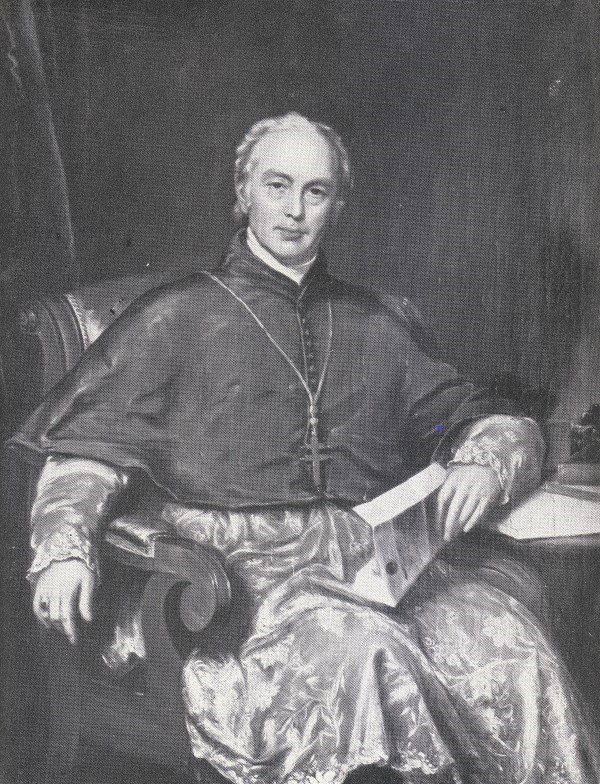 According to Austin Dunphy in Origin (1822): In 1812 in the month of May the house in Hanover Street East, Dublin was founded. The Most Rev. Doctor Murray, whose zealous exertions to promote the welfare of the Institute in that city , deserves particular notice. His Grace not only took its interests warmly to heart in the commencement, but continued and still continues to be its sincere friend.
According to Austin Dunphy in Origin (1822): In 1812 in the month of May the house in Hanover Street East, Dublin was founded. The Most Rev. Doctor Murray, whose zealous exertions to promote the welfare of the Institute in that city , deserves particular notice. His Grace not only took its interests warmly to heart in the commencement, but continued and still continues to be its sincere friend. Brother Austin Dunphy, Second Assistant to Edmund Rice, writing to Frere Guillaume (right), the Superior General of the De La Salle Congregation, Paris:
Brother Austin Dunphy, Second Assistant to Edmund Rice, writing to Frere Guillaume (right), the Superior General of the De La Salle Congregation, Paris: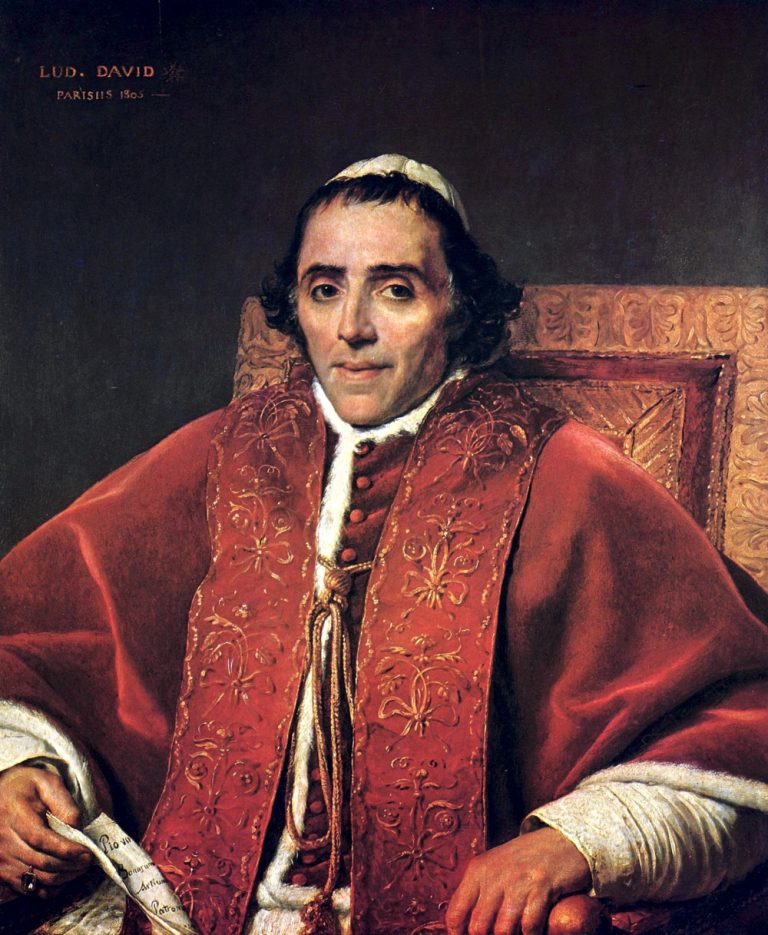 According to Austin Dunphy in Origin (1822): On the 5th of September 1820, the Brief Ad Pastoralis dignitatis fastigium, approving of the Articles and of the Institute itself, was issued. This happy event was the source of much joy to the Brothers. However, for want of a safe conveyance, the Brief did not arrive in Ireland till the Spring of 1821. The Rev. Dr. Peter Kenney of the Society of Jesus arrived in Rome soon after it was issued, and as his stay there was not long, he was the Bearer of this consolatory documents. It is proper to remark here that the Brothers owe a large debt of gratitude to Rev. John Rice, of the Order of Saint Augustine, and brother to Edmund Rice, for his very active and persevering exertions as Agent for the Institute at Rome.
According to Austin Dunphy in Origin (1822): On the 5th of September 1820, the Brief Ad Pastoralis dignitatis fastigium, approving of the Articles and of the Institute itself, was issued. This happy event was the source of much joy to the Brothers. However, for want of a safe conveyance, the Brief did not arrive in Ireland till the Spring of 1821. The Rev. Dr. Peter Kenney of the Society of Jesus arrived in Rome soon after it was issued, and as his stay there was not long, he was the Bearer of this consolatory documents. It is proper to remark here that the Brothers owe a large debt of gratitude to Rev. John Rice, of the Order of Saint Augustine, and brother to Edmund Rice, for his very active and persevering exertions as Agent for the Institute at Rome.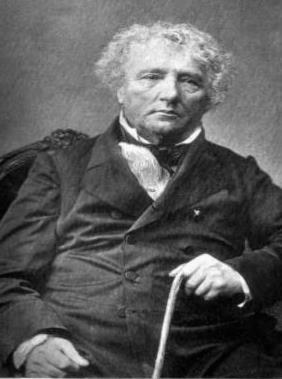
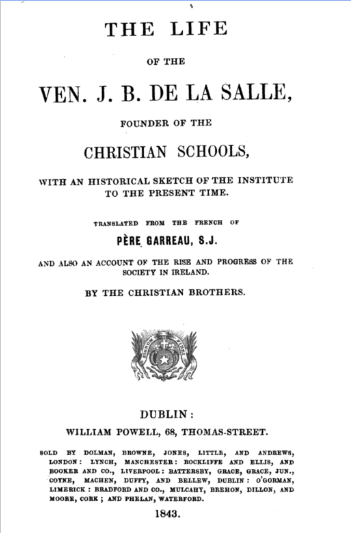 According to Garvan: Perhaps an even more insidious threat came to Edmund personally through the dissidence of some Brothers who tried to undermine his work and his vision. Some even claimed St. John Baptist de la Salle as their founder, and not Edmund Rice. Edmund’s successor as Superior General had his portrait done holding a copy of the life of de la Salle which he himself had written. This painting can still be seen in the Christian Brothers’ Generalate in Rome. This was an extremely painful period for Edmund as he tried to get his Congregation on a sure footing which would enable it to carry on for future generations what he had founded it for.
According to Garvan: Perhaps an even more insidious threat came to Edmund personally through the dissidence of some Brothers who tried to undermine his work and his vision. Some even claimed St. John Baptist de la Salle as their founder, and not Edmund Rice. Edmund’s successor as Superior General had his portrait done holding a copy of the life of de la Salle which he himself had written. This painting can still be seen in the Christian Brothers’ Generalate in Rome. This was an extremely painful period for Edmund as he tried to get his Congregation on a sure footing which would enable it to carry on for future generations what he had founded it for.
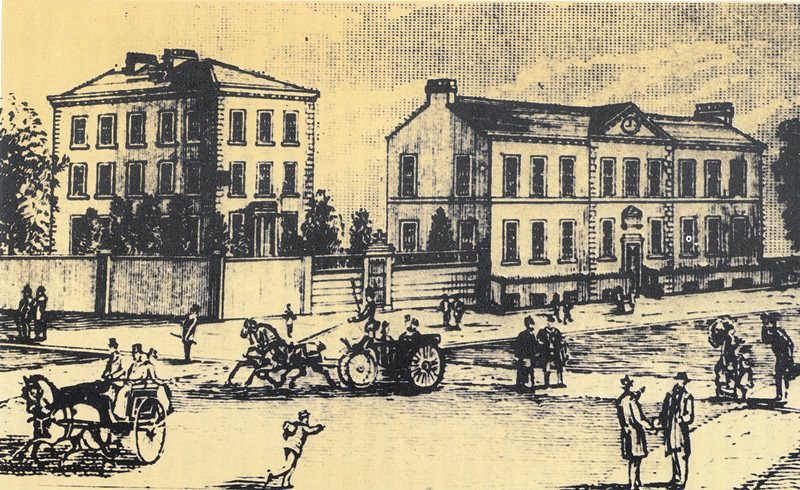 Perhaps no single institution established during Edmund Rice’s administration was the source of more concern and worry to the Founder and his brothers. The school itself was a great success educationally almost from the beginning but obtaining the funds to support it and the novitiate as well as the community of brothers was a major challenge to Edmund during his last years. He was 66 years old when the cornerstone was laid and 69 when the school was open for business.
Perhaps no single institution established during Edmund Rice’s administration was the source of more concern and worry to the Founder and his brothers. The school itself was a great success educationally almost from the beginning but obtaining the funds to support it and the novitiate as well as the community of brothers was a major challenge to Edmund during his last years. He was 66 years old when the cornerstone was laid and 69 when the school was open for business.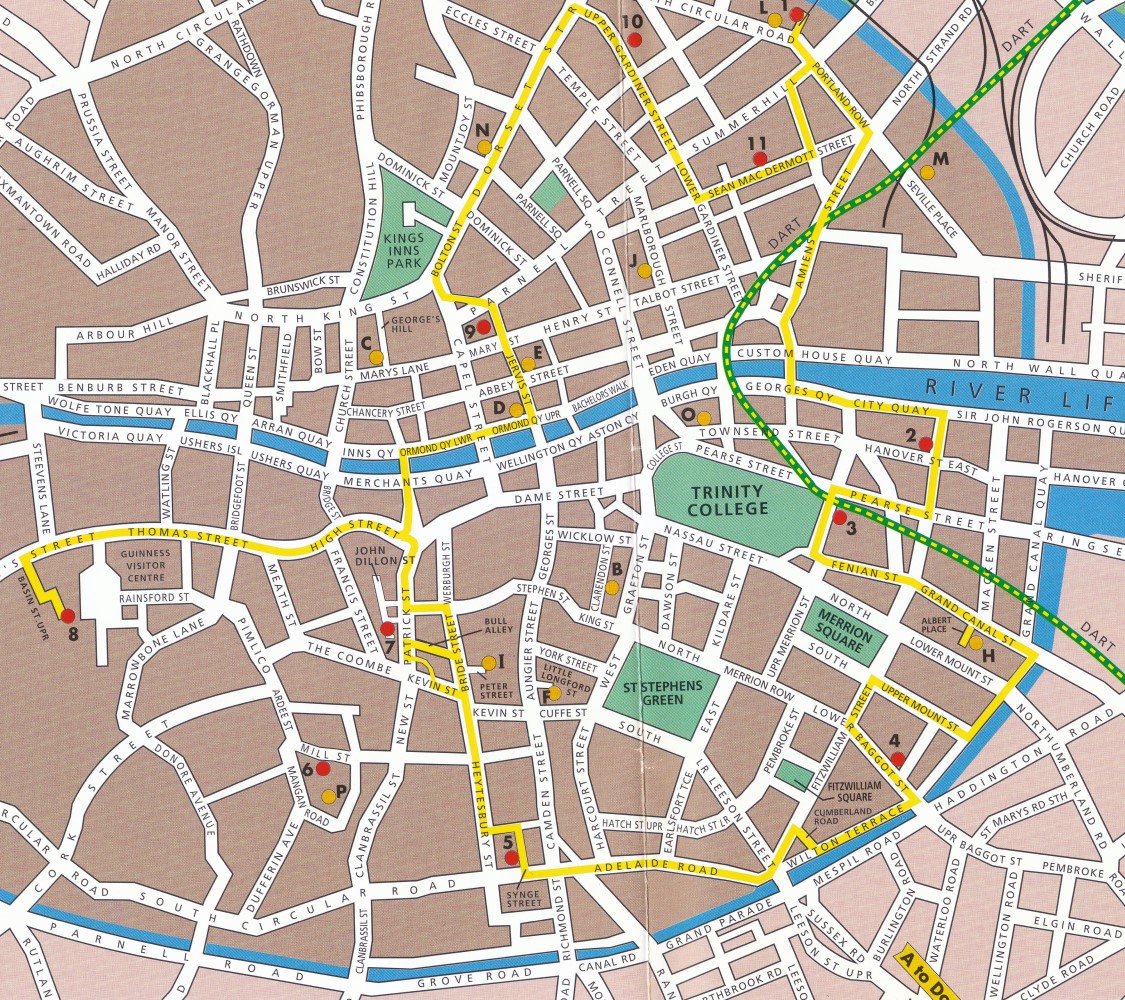
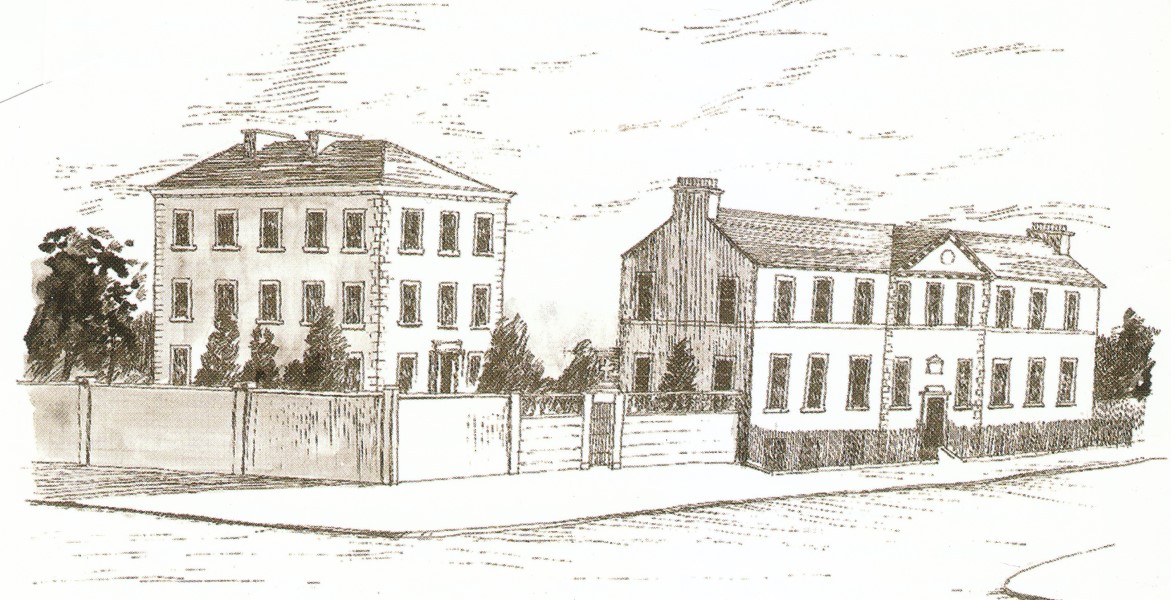 Edmund Rice arrived in Dublin in July 1826 with the aim of establishing a new headquarters for the Congregation of Christian Brothers, a novitiate to train new Brothers, and a model school where teachers could be trained.
Edmund Rice arrived in Dublin in July 1826 with the aim of establishing a new headquarters for the Congregation of Christian Brothers, a novitiate to train new Brothers, and a model school where teachers could be trained.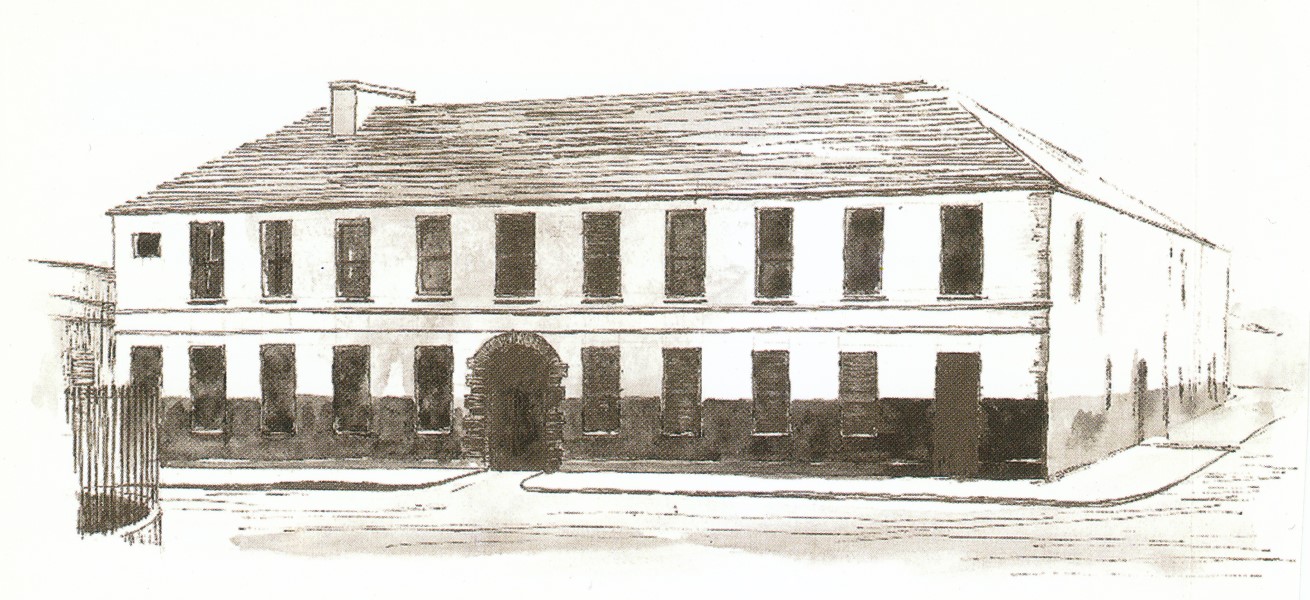 The first of Edmund Rice’s foundations in Dublin was in the parish of St. Andrew in 1812. At the request of Archbishop Murray, two Brothers were sent from Waterford, one being Br. Thomas John Baptist Grosvenor, a companion of the Founder. Originally they lived in Moira Place, now called Albert Place, off Grand Canal Street. They attended Mass in the nearby Townsend Street chapel until St. Andrews church was completed in 1837.
The first of Edmund Rice’s foundations in Dublin was in the parish of St. Andrew in 1812. At the request of Archbishop Murray, two Brothers were sent from Waterford, one being Br. Thomas John Baptist Grosvenor, a companion of the Founder. Originally they lived in Moira Place, now called Albert Place, off Grand Canal Street. They attended Mass in the nearby Townsend Street chapel until St. Andrews church was completed in 1837.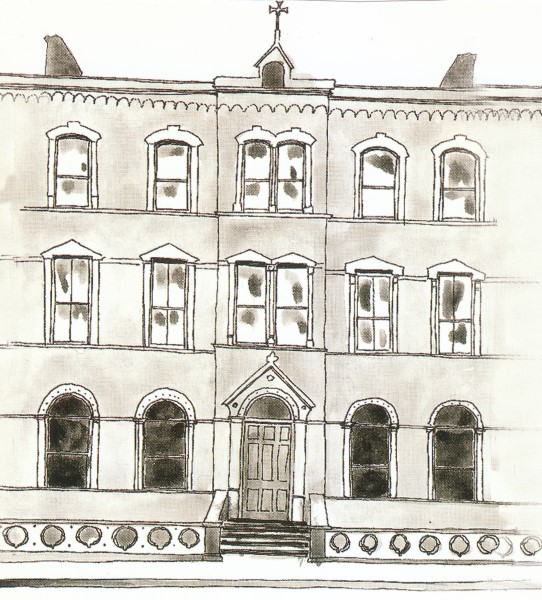
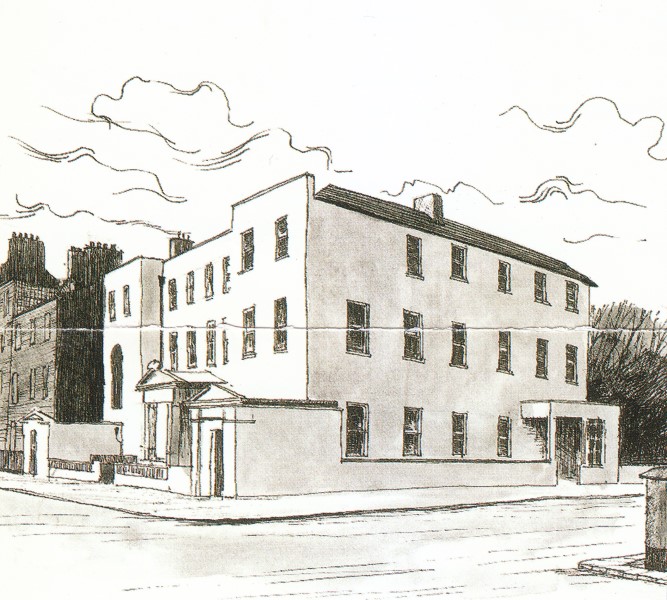 Catherine McAuley, foundress of the Sisters of Mercy, was a contemporary of Edmund Rice. In September 1827 Catherine established a centre at Baggot Street, an affluent area on the south side of the city. Assisted by a number of companions, she provided food, clothing, hospitality and education for many of Dublin’s poor.
Catherine McAuley, foundress of the Sisters of Mercy, was a contemporary of Edmund Rice. In September 1827 Catherine established a centre at Baggot Street, an affluent area on the south side of the city. Assisted by a number of companions, she provided food, clothing, hospitality and education for many of Dublin’s poor.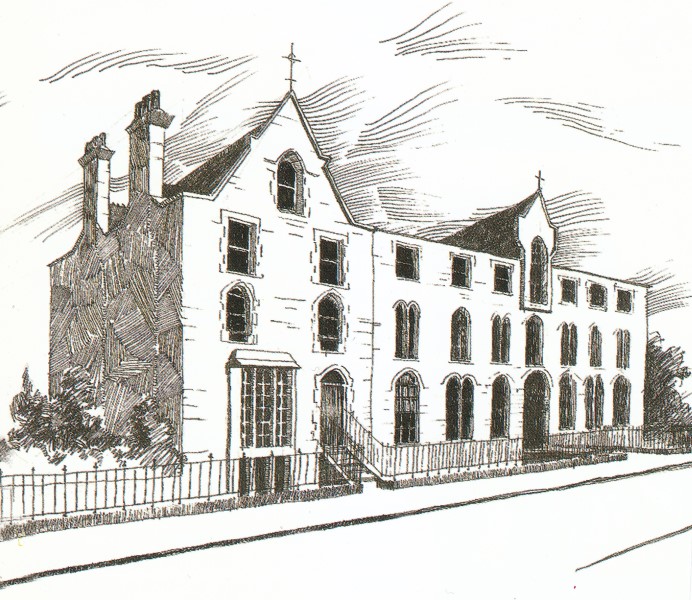 Synge Street school and residence which opened in 1864 was without doubt the inspiration of Br. Edward Patrick O’Flaherty, Director of Francis Street. The foundation stone was laid by Archbishop Cullen. Peter McSwiney, Lord Mayor of Dublin at the time, was one of the first people to enroll his son in the school. By the following year 600 pupils were on the roll books.
Synge Street school and residence which opened in 1864 was without doubt the inspiration of Br. Edward Patrick O’Flaherty, Director of Francis Street. The foundation stone was laid by Archbishop Cullen. Peter McSwiney, Lord Mayor of Dublin at the time, was one of the first people to enroll his son in the school. By the following year 600 pupils were on the roll books. Mill Street was the location of the second foundation of the Brothers in Dublin. No. 10 Mill Street, which once served as the Earl of Meath’s townhouse, became the residence of the Brothers in 1818.
Mill Street was the location of the second foundation of the Brothers in Dublin. No. 10 Mill Street, which once served as the Earl of Meath’s townhouse, became the residence of the Brothers in 1818.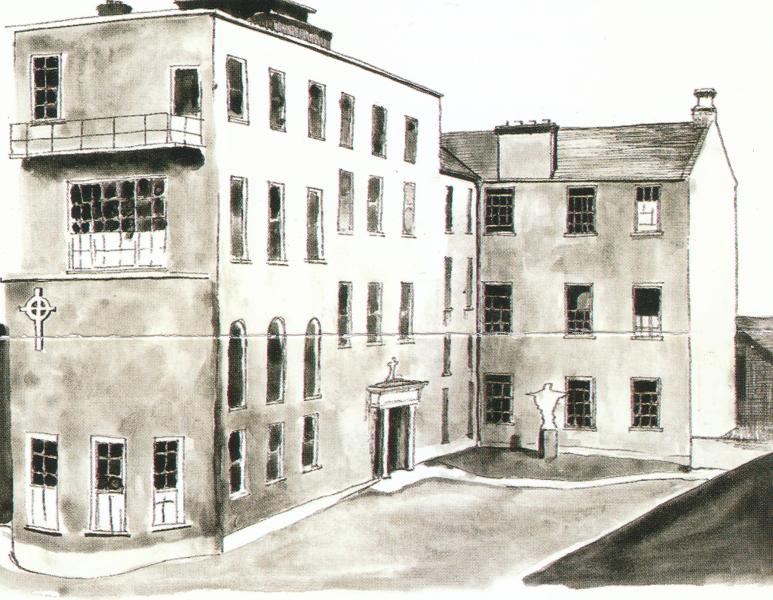 In 1820 Edmund Rice agreed to establish another community in Dublin, this time in James’ Street. Two Brothers were assigned to the new foundation and Br. Francis Manifold was appointed Director.
In 1820 Edmund Rice agreed to establish another community in Dublin, this time in James’ Street. Two Brothers were assigned to the new foundation and Br. Francis Manifold was appointed Director.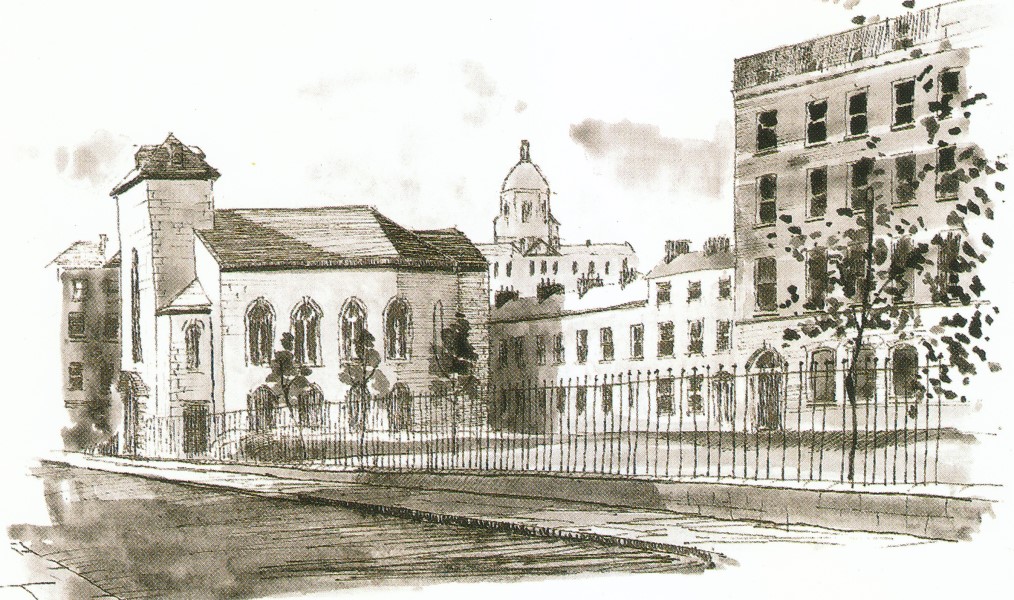 (The drawing shows Jervis Street hospital.)
(The drawing shows Jervis Street hospital.)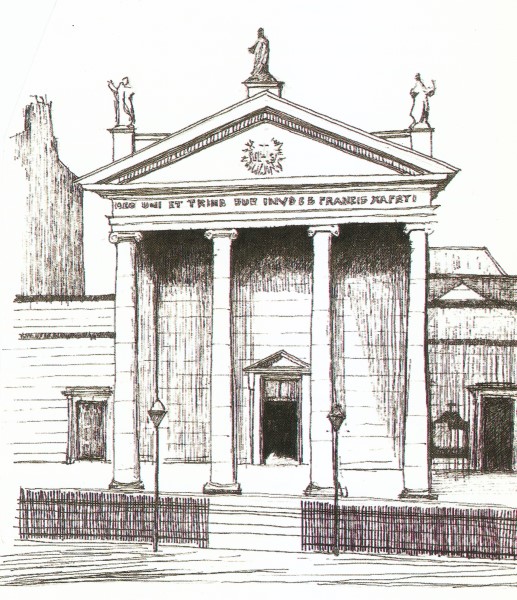 In 1827 the Sisters of Charity acquired a site in Gardiner Street from Archbishop Murray for their new schools. Not all the land was needed so the Superior of the Jesuit community at Hardwicke Street offered to lease the land and build a church there. The first stone of St. Francis Xavier Church was laid in July 1829 and it was opened in May 1852 by the Archbishop.
In 1827 the Sisters of Charity acquired a site in Gardiner Street from Archbishop Murray for their new schools. Not all the land was needed so the Superior of the Jesuit community at Hardwicke Street offered to lease the land and build a church there. The first stone of St. Francis Xavier Church was laid in July 1829 and it was opened in May 1852 by the Archbishop.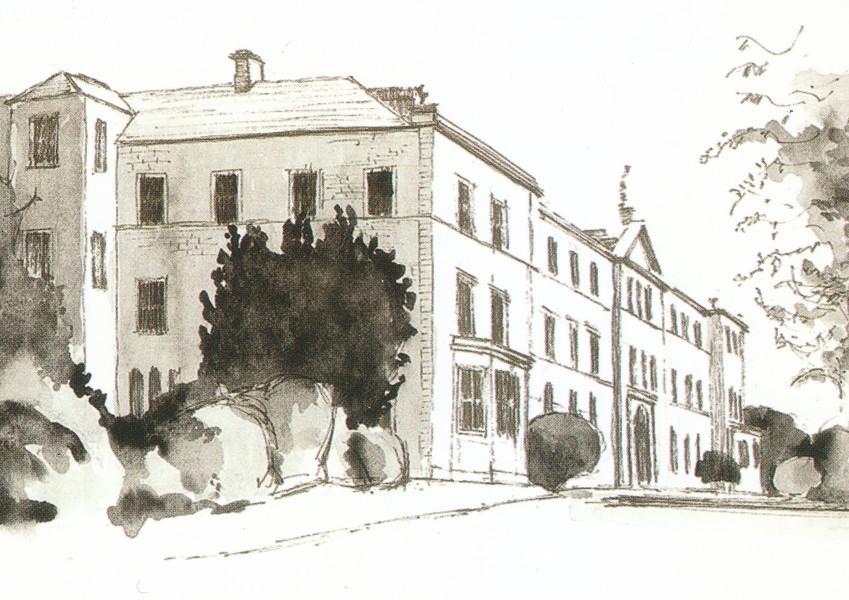 In 1874 the Christian Brothers’ headquarters and the novitiate were transferred from North Richmond Street to Belvedere House, Drumcondra, now on the campus of St. Patrick’s College (part of the DCU Institute of Education).
In 1874 the Christian Brothers’ headquarters and the novitiate were transferred from North Richmond Street to Belvedere House, Drumcondra, now on the campus of St. Patrick’s College (part of the DCU Institute of Education).